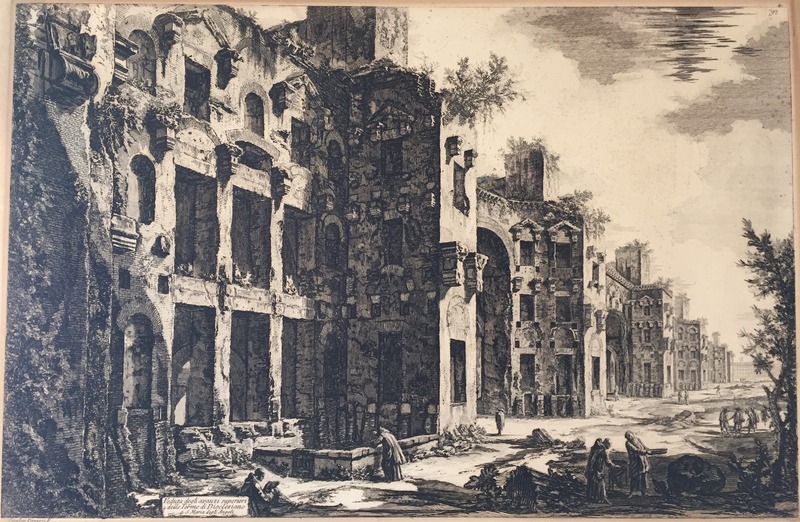Piranesi, Baths of Diocletian
This etching of the Baths of Diocletian, circa 1774, uses repetition and high-contrast shadows create a sense of an impressive but eerie place. The walls of the Baths of Diocletian repeat in a pattern that recedes diagonally towards a distant background. The composition is both emphatically diagonal in the trend towards a vanishing point and repeatedly orthogonal in the meeting of corners. (The tone and technique visible here are echoed in the drawings of the twentieth-century artist M. C. Escher, who also created lifelike etchings of Roman architecture.) This print is true to the scale of the Baths of Diocletian: they remain the largest Roman baths ever built.
The light and dark areas of the print show a dramatic difference in etching technique. In the light areas, the lines are fine and straight. In the dark areas, the strokes are much wilder – they have a wavy movement, and are much darker, probably as the result of the metal plate spending more time in an acid bath.
Caught in the middle of these dramatic light and dark shapes, a figure on the left with a downcast gaze adds to the sense that this is a place where one could easily become lost. Piranesi’s etching of the Baths of Caracalla and his Carceri series of prison interiors have similarly labyrinthine qualities.
